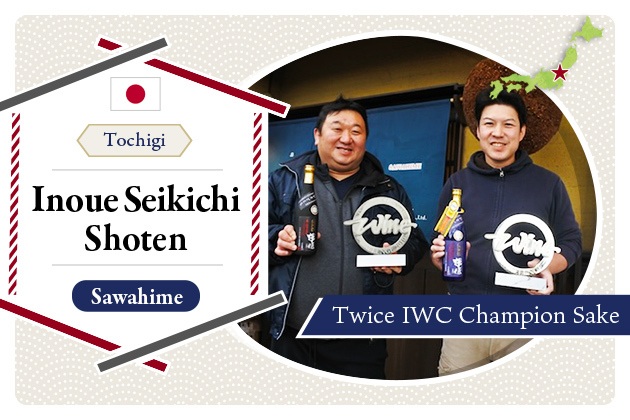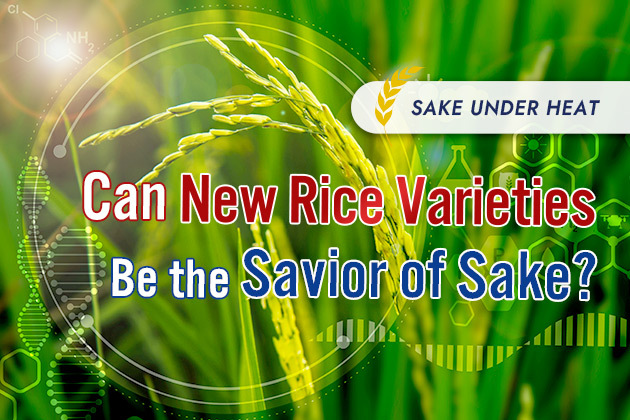
2024.11
13
What is Good Rice for Sake Brewing? - Learn about the Characteristics and Grades
Rice is one of the key factors in determining the quality of sake. The rice used in sake brewing differs from everyday eating rice, as it has been specially cultivated to enhance the flavor of sake. In this article, we will explore the characteristics of high-quality sake rice and the grading system used to assess it.
Sake rice and table rice
There are two types of rice (paddy rice): non-glutinous and glutinous rice. Among these, non-glutinous rice is primarily used for sake production, though some sake is made with glutinous rice. Non-glutinous rice is further divided into table rice, which we consume daily, and sake rice, which serves as a raw material for brewing sake. Varieties of sake rice are also known as ‘shuzo-koteki-mai (sake brewing-suitable rice)' due to their specific characteristics that make them ideal for sake production.
Rice cultivated in Japan is regulated under the 'Agricultural Product Standards' by the Ministry of Agriculture, Forestry and Fisheries. Sake rice falls under the category of 'unpolished rice for brewing,' with over 120 varieties currently registered.
Characteristics of rice required for sake brewing
Sake rice must possess certain characteristics that make it ideal for brewing. These include large grains that are resistant to breaking, a high proportion of starch, centrally located in the grain,‘shinpaku (heart-white)' cores, and low levels of protein and fat. The rice must also be soft to aid the brewing process. Sake rice varieties have been specifically cultivated to enhance these qualities, making it easier to produce high-quality sake.
Large grains that are hard to break
Sake rice must have large grains with high resistance to breakage, a quality measured by the 'senryu-ju,' which refers to the total weight of 1,000 whole grains (i.e., unbroken and unchipped). The higher the senryu-ju, the larger and more robust the grain structure.
Sake rice undergoes a high degree of milling, with more of the outer layers removed compared to rice used for consumption. According to the 'Quality Labeling Standards for Sake' set by the National Tax Agency, the milling ratio must be 60% or less for ginjo sake and 50% or less for daiginjo sake, meaning that sake rice must withstand significant polishing. During this process, more heat is generated as the rice is polished further, increasing the risk of breakage. Broken rice grains leave behind outer parts that were meant to be removed, resulting in inconsistent grain size and shape. Therefore, sake rice must not only have large grains but also be durable enough to endure milling to these levels.
High percentage of shinpaku appearance
In some rice, a white, opaque area called shinpaku may appear in the center of the grain. This shinpaku is a soft area where the starch is loosely packed, creating small gaps. It is believed that rice with a large shinpaku is particularly well-suited for sake brewing, as it aids in fermentation.
The shinpaku appearance rate measures the extent to which shinpaku appears in the rice. Data indicates that the famous sake rice variety, Yamadanishiki, has a heart-white appearance rate of approximately 70%.
Low protein
If the protein content in sake rice is high, its ability to absorb water decreases, and the digestibility of the steamed rice tends to worsen. Additionally, the protein in sake rice is closely linked to the flavor of the final product. Higher protein levels often lead to off-flavors in the sake, and can also negatively impact its color and aroma. Therefore, sake rice is required to have a low protein content to ensure a cleaner, more desirable taste and appearance.
Low fat
Another characteristic of sake rice is that it contains significantly less protein and fat compared to table rice. For sake brewing, the outer layers of the rice, which contain higher concentrations of protein and fat, are polished away before use. In the case of the fruity aroma known as ginjo-ka in sake, the fatty acids—especially unsaturated fatty acids—found in the rice can inhibit the yeast's ability to produce isopropyl acetate, a compound that contributes to banana and melon-like aromas. Therefore, rice with a low fat content is ideal for brewing sake, as it helps to enhance these desirable fruity notes.
Soft grain
It is said that softer rice is preferable for sake brewing. While 'hard' and 'soft' in terms of edible rice refer to its water content, the 'soft' rice ideal for sake brewing is defined by its ability to absorb water well, withstand polishing, and dissolve easily in the yeast starter and moromi.
Quality Classification System
Evaluation criteria and classification of sake rice grades
Rice intended for consumption is classified into first-class, second-class, and third-class categories based on the proportion of properly shaped grains in a given quantity of brown rice. This proportion is referred to as the “seiryu buai (percentage of well-shaped grains.)"
Similarly, sake rice is also graded. The grading system includes “tojujo grade” (90% or more whole grains), “tokuto grade” (80% or more whole grains), “first grade” (70% or more whole grains), “second grade” (60% or more whole grains), and “third grade” (45% or more whole grains). In addition to the percentage of whole grains, the grading considers the ratio of damaged grains, which refers to the presence of defective grains such as dead grains, discolored grains, husks, or foreign matter. Each grade has a specified maximum allowable percentage of such damaged grains.
| Percentage of well-shaped grains | Ratio of damaged grains | |
|---|---|---|
| Tokujo | 90 or more | 5 or less |
| Tokuto | 80 or more | 10 or less |
| First | 70 or more | 15 or less |
| Second | 60 or more | 20 or less |
| Third | 45 or more | 30 or less |
Sake is categorized into "tokutei-meisho-shu," such as ginjo-shu, junmai-shu, and honjozo-shu, and other futsushu types according to the "Quality Labeling Standards for Sake." The rice used for these tokutei-meisho-shu must be at least third-class brown rice or polished brown rice of equivalent quality.
What is “togai” or non-grade?
Rice that fails to meet the criteria for third grade is classified as “togai” or non-grade. Even if non-grade rice is meticulously brewed, the resulting sake cannot be labeled as tokutei-meisho-shu and is classified as “futsushu.” Since sake brewing rice is produced in limited quantities and commands high prices, some breweries intentionally purchase non-grade rice from contract farmers to craft affordable yet high-quality junmai sake.
Special A District of Yamadanishiki
You may have encountered the term "Special A," which differs from the sake rice grades introduced earlier. This designation refers not to the grading of sake rice but to specific regions where Yamadanishiki, a premier sake rice variety, is cultivated—more precisely, the "Special A District."
Yamadanishiki, often called the king of sake rice, was developed at the Hyogo Prefectural Agricultural Experiment Station in 1936. While its cultivation has since expanded beyond Hyogo Prefecture, the finest quality Yamadanishiki is still produced in Hyogo, particularly in the “Special A District.” These areas are located in the Banshu region in southeastern Hyogo Prefecture, including Miki City (Yokawa Town and Kuchiyokawa Town) and Kato City (formerly Tojo Town and eastern Yashiro Town). These districts are renowned for their high-quality rice production due to a combination of significant temperature variation during summer and nutrient-rich soils ideal for cultivating sake rice.
In the Banshu region, the “Village Rice System” was established during the early Meiji era, where specific sake breweries in Nada formed direct contracts with villages producing sake rice. Sake rice is more challenging to cultivate than table rice, yielding lower quantities. As a result, sake rice must be priced higher than food rice to incentivize farmers to produce it. The Village Rice System benefited both parties: breweries ensured a stable supply of high-quality rice, and farmers were able to sell their rice at higher, more stable prices.
After World War II, the production areas in Hyogo Prefecture were categorized into A, B, and C zones, with the Special A zone further subdivided into Special A-a, Special A-b, and Special A-c zones. Today, Yamadanishiki is no longer grown in zones B and C, and there are no eligible villages in zone A-c. The Yamadanishiki produced in zones A-a and A-b is regarded as the highest quality and is referred to as Special A District rice.
Summary
In this article, we explored the essential role of sake rice in the art of sake brewing. Today, over 120 varieties of sake rice are cultivated across Japan. While Yamadanishiki, often hailed as the king of sake rice, is widely recognized by sake enthusiasts, there are many other varieties that contribute to the rich diversity of sake. Recently, more breweries have begun to highlight the specific rice varieties and brands used in their brews. Additionally, some sake producers are crafting unique and flavorful sake using locally sourced rice. Next time you enjoy a glass of sake, why not savor the distinct flavors that different rice varieties bring to each brew?
Pickup Articles
2019.01.18
2019.01.25
Trending Articles
Popular Articles
Recent Articles













